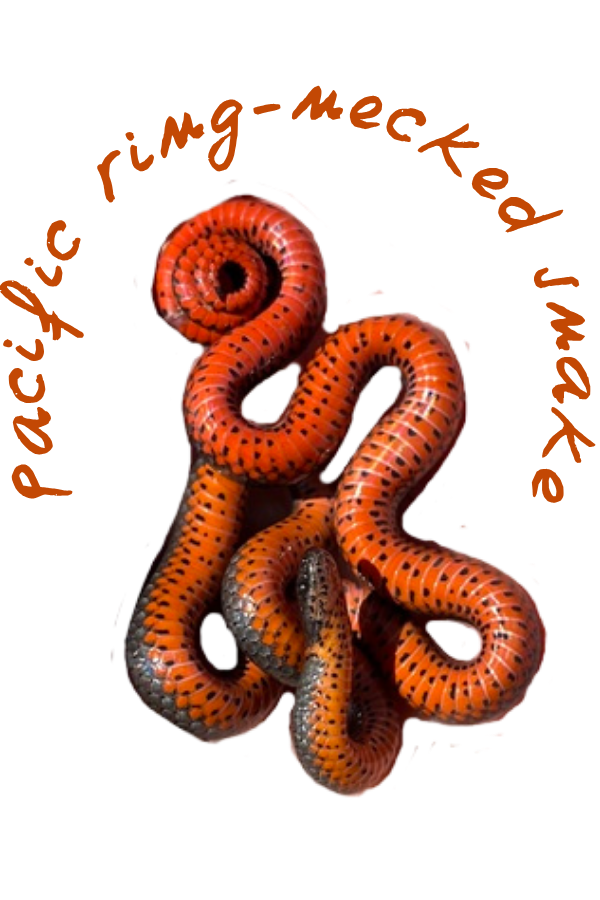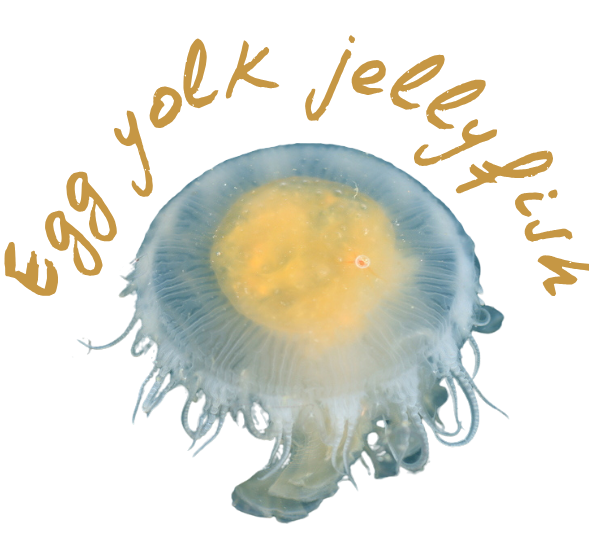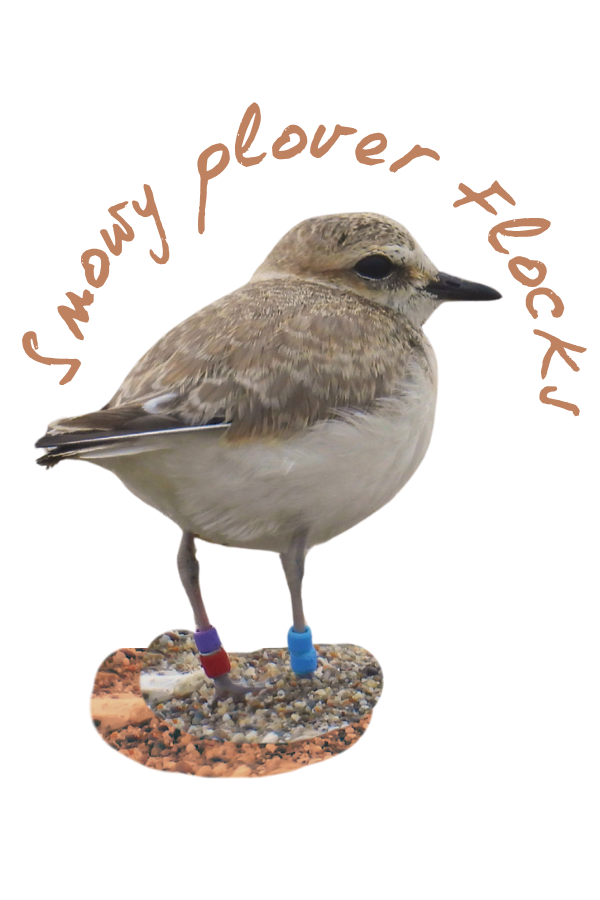As July comes to a close, we’re reflecting on the beauty and diversity of life which flourished around the Seashore this month. From egg yolk jellyfish pulsing through Tomales Bay to juicy salmonberries and moths, this July was one for the books.

(Snake) Eggs in One Basket
This June and July, Pacific ring-necked snakes (Diadophis punctatus amabilis) are laying clutches of long, white eggs in loose soil under decaying logs and leaf litter—sometimes in communal nests. Researchers identified 481 species which use communal nesting across a wide variety of groups, including snakes, lizards, birds, amphibians, mollusks, and insects. Though further research is needed, scientists hypothesize that communal nesting may provide thermal advantages and minimize the energy that mother snakes expend while selecting sites to construct nests. On the other hand, communal nesting may also spread disease more quickly and lead to competition between newly-hatched young.
Beneath their brown-black backs, Pacific ring-necked snakes present a second evolutionary wonder—bright orange, red, or yellow undersides. When alarmed, the snakes curl the end of their tail into a tight coil, putting their vibrant coloration on display.
Though the Pacific ring-necked snake has been observed at Point Reyes, other snakes have been sighted more frequently (perhaps because of the ring-necked snake’s nocturnal tendencies?). Check out the snake species which have been observed at the Seashore on iNaturalist!

Egg Yolk Jellyfish
If you’re lucky, you might spot a huge yellow-centered jellyfish pulsing through Tomales Bay—the egg yolk jellyfish (also known as the fried egg jellyfish)! These jellies can grow up to two feet in diameter and their tentacles can reach up to 20 feet in length. And if you’re extra lucky, you might notice larval crabs hitching a ride on top of the jellies—a symbiotic relationship in which the crabs eat microscopic amphipods which are parasitic to the jellyfish.
Earlier this month, our friends at Point Reyes Adventure Co. spotted two egg yolk jellyfish while kayaking on Tomales Bay. See photos and read more about their experience!

Juicy Jewels
When observed up-close, salmonberries look like regal gems, each one a collection of plump red beads gathered beneath a flamboyant crown of pink. These ripe, juicy jewels are dotting the Point Reyes landscapes—tasty trail gems. Earlier this spring, their large pink flowers bloomed, inviting insects and birds to make their special pollen deliveries. About a month after their pollination, the flowers transformed into yellow-red fruits, ready to be nibbled by peckish birds and deer, and hikers.
Check out the National Park Service’s guidelines on the quantity of berries that visitors can collect per day.

Plover Flocks
As July comes to a close, snowy plover season is winding down! So far, a total of 51 nests were found and monitored this season—four nests are still active, 18 have already hatched, and 29 nests failed due to predation and weather events.
Biologists are seeing plovers beginning to come together and form flocks for the winter season—helpful for maximizing foraging efforts and protection from predators. Some birds in the flock are local, while others come from farther away. As these flocks begin to form, PRNSA Biological Science Technician Parker Kaye carefully observes them to identify band combinations on the birds’ legs. Parker says that this information “helps us understand where birds are coming in from, what locals are still around and might stick around for the winter, and which of our banded hatchlings made it all the way to fledge. This is one of my favorite times of the year because we get to see so many different individuals and add a little more information to their life story.”
Read more about the latest plover news in Parker’s latest snowy plover update.
Moth Red Carpet
National Moth Week was July 19-27, and in celebration, PRNSA staff participated in a moth red carpet! We sighted nine fabulous Point Reyes moths showing off their beautiful colors and patterns:
- White-margined ctenucha (Emily – Communications Manager)
- Pyrausta perrubralis (Celeste – Environmental Educator)
- Ocean spray fairy (Donna – Executive Director)
- Western sheep moth (Avani – Multimedia Storytelling Coordinator)
- Pacific dagger (Biret – Education Director)
- Large yellow underwing (Francesca – Environmental Educator)
- Ceanothus silk (Heather – Director of Community Engagement & Philanthropy)
- Corn earworm (Julia – Membership Coordinator and Database Manager)
- Brown ctenucha (Cristobal – Volunteer Manager)
The Seashore is home to many more moth species of all kinds—nocturnal and diurnal, big and small, muted and bright toned. Three cheers for these incredible insects! A special thank you to California Academy of Sciences, whose amazing sea slug outfits video inspired our Moth Day.
Photo Credits: Orange Salmonberry – Masumi Palhof via iNaturalist; Red salmonberry – Cat Chang via iNaturalist; Pacific ring-necked snake in header – Arya Natarajan via iNaturalist; Pacific ring-necked snake in graphic – Parsa Fard via iNaturalist; Egg yolk jellyfish – Zach Hawn via iNaturalist; Snowy plover – Parker Kaye / PRNSA
Moth Photo Credits: White-margined ctenucha – samaber via iNat; Pyrausta perrubralis – Cricket Raspet via iNat; Ocean spray fairy – Nils Warnock via iNat; Western sheep moth – Andrew Aldrich via iNat; Pacific dagger – naturecandids via iNat; Large yellow underwing – Tatiana Svidskaia via iNat; Ceanothus silk – PRNSA; Corn earworm – Stuart J. Marcus via iNat; Brown ctenucha – arlenedevitt via iNat.



